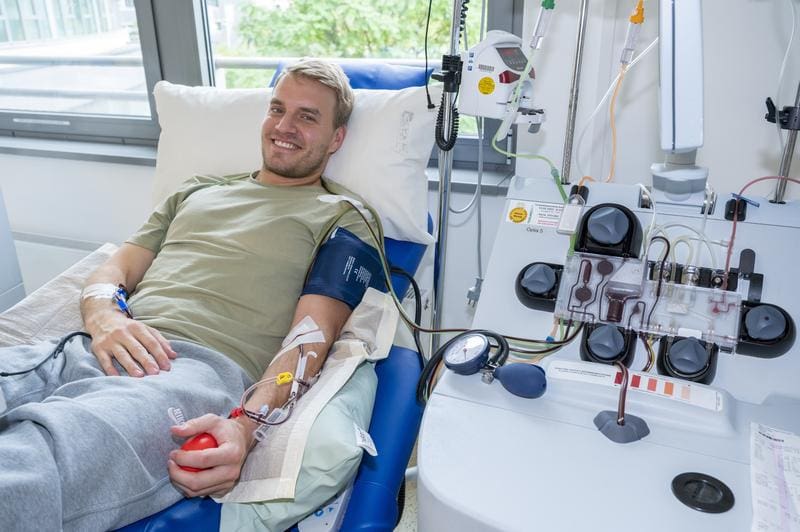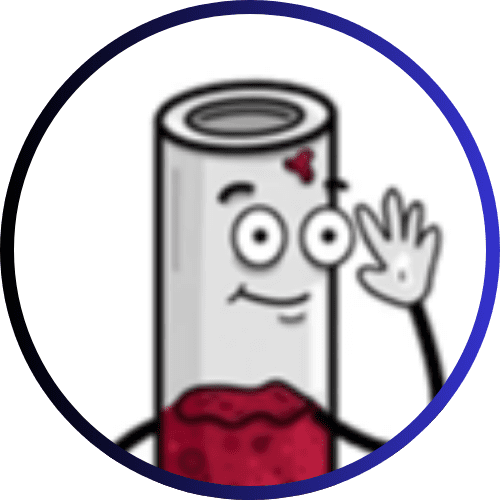Younger donor age improves chances of success in stem cell transplants
The compatibility of human leukocyte antigens is considered the most important criterion in the selection of donors for allogeneic hematopoietic stem cell transplants. Current data from the
The selection of suitable donors is crucial for long-term healing after allogeneic hematopoietic stem cell transplantation. Primarily, HLA-identical sibling donation is considered the first choice, as it carries a low risk of non-relapse mortality and rejection reactions such as acute graft-versus-host disease.
Improved matching strategies, pre-treatments, and prophylaxis options also allow unrelated HLA-compatible donors or those with minor HLA differences. Haploidentical family donations are also possible. In addition to HLA characteristics, other factors such as age, gender and blood type are gaining in importance. Previous analyses of over 10,000 patients showed that only donor age correlates significantly with survival, with two-year survival falling by about three percent for every ten years of older age.

A retrospective registry study published in October 2025 in the journal Leukemia confirms the strong influence of donor age. Patients over the age of 50 with myeloid cancers have a better chance of survival with stem cells from young, HLA-compatible unrelated donors than from older HLA-identical siblings. The study included 3460 patients with acute myeloid leukemia, myelodysplastic syndrome, myeloproliferative neoplasia or MDS/MPN who received a first transplant. Of these, 1235 donations came from siblings aged 50 and over and 2225 from unrelated donors between the ages of 18 and 35.
After multivariable adjustment, there was a risk reduction of 14 percent in event-free survival, 18 percent in overall survival and 16 percent in the risk of relapse in the group with young unrelated donors. The effect was all the stronger the greater the age difference between donors.
In addition, gender and cytomegalovirus status played a role. An advantageous constellation exists if the CMV serostatus of the donor and patient matches and no female donor donates to a male patient. In an advantageous constellation, event-free and overall survival was significantly better in young unrelated donors than in older siblings. In an unfavorable constellation, the chances equalized.
The DKMS HAMLET study, which has not yet been published, compared haploidentical family donors with unrelated donors with a mismatch. There was no relevant difference between the two groups. The prospective study in patients with acute myeloid leukemia, myelodysplastic syndrome or acute lymphocytic leukemia without identical donors confirmed the age effect: younger donors led to better two-year survival rates.
Despite numerous studies, these are not sufficient to fully reflect the practical decisions. In everyday clinical practice, urgency and availability dominate, which often prioritizes the degree of kinship. Current research aims to clarify the reasons for the advantage of young donors, such as stem cell fitness or immune system transmission. Young donors can save lives, which is why registration is recommended. Information on registering as a stem cell donor can be found on the DKMS website.
References:
1. Schetelig J, et al. Leukemia 2025; 39(10):2523ŌĆō2532. doi: 10.1038/s41375-025-02724-1
2. Onkopedia Guideline “Donor Selection”, as of January 2021, available at: https://www.onkopedia.com/de/onkopedia/guidelines/spenderauswahl/@@guideline/html/index.html
3. Salvatore D, et al. Haematologica 2018; 103(8):1317ŌĆō1328. doi: 10.3324/haematol.2018.189258
4. Shaw BE, et al. Biol Blood Marrow Transplant 2018; 24(5):1049ŌĆō1056. doi: 10.1016/j.bbmt.2018.02.006
5. St├Člzel F, et al., presented at the DGHO 2025, Cologne 24-27 October, P492.
Editor: X-Press Journalistenb├╝ro GbR
Gender Notice. The personal designations used in this text always refer equally to female, male and diverse persons. Double/triple naming and gendered designations are used for better readability. ected.




